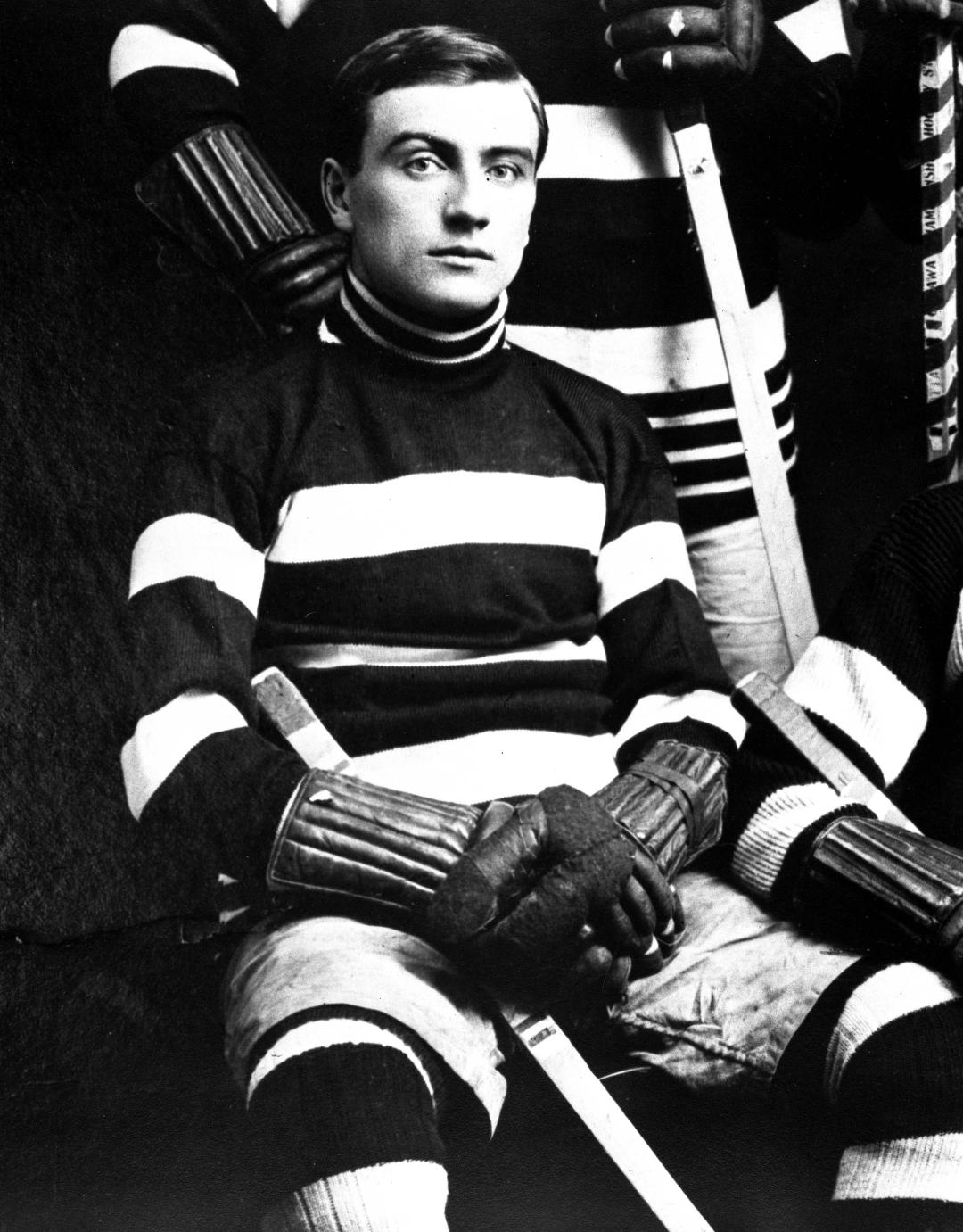Marty Walsh scored 10 goals in a single Stanley Cup game
 By Maddy Ritter
By Maddy Ritter
By any standard, Marty Walsh was one of the greats – a great man and a great player in both amateur and professional hockey. He was a brilliant goal scorer and had an understanding of the grit, determination, and human qualities of outstanding athleticism.
After Walsh scored a remarkable 10 goals in a single Stanley Cup game, the Ottawa Citizen proclaimed him “the famous Kingston goal manufacturer.” Walsh only played six years professionally but would later be inducted into the Hockey Hall of Fame as one of the best players of his era.
Martin “Marty” Walsh was born on Oct. 16, 1884, in Kingston and was one of the most prolific scorers in hockey history. His father Michael was a butcher and had a shop on King Street overlooking Market Square. Walsh attended Regiopolis College high school and his rise to hockey fame fittingly happened in Kingston, where the 15-year-old joined the Ontario Hockey Association’s Kingston Frontenacs. He then played at Queen’s University at age 17. Walsh turned professional in the 1906-1907 season, joining the Canadian Soo of the International Professional Hockey League. Unfortunately, he was hit by an injury after just seven games, which temporarily halted his career.
Several teams attempted to woo Walsh, including the Montreal Shamrocks and Montreal Wanderers. But finally, in 1907, Walsh joined the Ottawa Hockey Club, perhaps better known as the Senators, staying with them for five seasons. Walsh helped lead the Senators to three Stanley Cup victories, in 1909, 1910, and 1911, and acted as captain starting in 1911.
During those early years, the Stanley Cup was awarded using a challenge system. From 1893-1914, the champions held the cup until they lost their league title or a champion from another league issued a formal challenge and won a game or series. It was not restricted to professional players – the Queen’s team challenged unsuccessfully for the cup three times. In one of the most famous challenges, the Dawson City team in 1905 traveled by dog sled, ship and then train to Ottawa. It was an epic journey that took a month and by the time they arrived the Dawson team was exhausted and had not practiced. Ottawa pounded them in the two-game series, winning 9-2 and 23-2.
Walsh’s accomplishments were extraordinary. In his five seasons with Ottawa, Walsh scored 135 goals in 59 games and captured scoring titles in his first two seasons. In the 1909 season, Walsh was the highest scorer in the league.
On March 16, 1911, Walsh performed the most impressive feat of his career - netting 10 goals in a single game against Port Arthur in the battle for the Stanley Cup; he was described as a "one-man wrecking crew."
The Ottawa Citizen hailed Walsh’s incredible 10-goal game. "This is a decidedly great performance for Walsh not only tallied at will, but he did a great deal of checking and was on top of the rubber from beginning to end."
Stanley Cup-winning goals are not usually counted for the challenge era. Nevertheless, Walsh scored two in challenge games that year: the one against Port Arthur and another in a challenge game against Galt.
At one point, Walsh was earning $200 a week to play, a huge amount at the time. However, players had very little power to negotiate their pay with team owners. He saw his salary cut in 1911 to just $600 a season.
Despite an illustrious and successful career, Walsh would be the first to note that playing hockey professionally was anything but glamorous. In an interview for the Ottawa Journal on Dec. 9, 1909, Walsh discussed the level of pay for professional hockey players. “ I can tell you when a man draws that amount, he nearly earns every cent of it.”
Walsh elaborated and explained some of his injuries, sharing “my first year out I was handed a broken ankle,” and “in New York last year I came out of the game with a face that looked like the results of an encounter with wildcats.” Broken teeth and broken bones were all part of the equation for Walsh, playing in one of the roughest eras in hockey history. And yet, Walsh remained a steadfast, dedicated, and reliable teammate.
After retiring from gameplay in 1912, Walsh explored several other fields of working, ranging from ranching cattle in Winnipeg, acting as a paymaster for the Grand Trunk Railway, and holding to a two-term post as the coach of the Edmonton Eskimos. Even after retiring, Walsh’s passion for the game clearly shone through, as he led the Eskimos hockey team to the Allan Cup in 1913.
Tragically, Walsh fell ill in 1914 with tuberculosis. Upon being admitted to the Gravenhurst Sanitorium to receive medical help, doctors estimated that there was little to be done. Indeed, on March 27, 1915, barely a month after his admission, Walsh succumbed to his illness and passed away. He was only 30 years old.
Walsh will go down in history as one of the most skilled players in hockey history. He was inducted into the Hockey Hall of Fame in 1962 and has a number of other accolades, including the Most Valuable Player in his 1909 season with the Ottawa club, and his nomination to the all-star teams in 1908 and 1909 in the league. However, tragically, Walsh died alone, with no friends or family, and only his sister Loretta as a living relative at his funeral at St. Mary’s Cathedral in Kingston.
Maddy Ritter is an intern with the Original Hockey Hall of Fame and a history student at Queen's University.